Flicking through a back issue of Elle Deco recently, I came across a profile of the Hungarian modernist designer Marcel Breuer, a protege of the Bauhaus movement’s instigator, Walter Gropius, and later a teacher at the Bauhus school. Breuer, it said, was most famous for his “revolutionary, rectilinear tubular-steel furniture” and especially for a shiny “B3” armchair he designed, inspired by bicycle handlebars.
Well to furniture design aficionados he may be, but to skiers he’s the creator of Flaine, the purpose-built French ski resort in the Alps’ Grand Massif. When the resort was commissioned, in the early 1960s, Breuer was an understandable choice for developers Eric and Sylvie Boissonnas: they were forward-thinking modern-art lovers who had a grand utopian plan to establish an original example of architecture and urban planning in France – a mountain resort with the feel of a city.
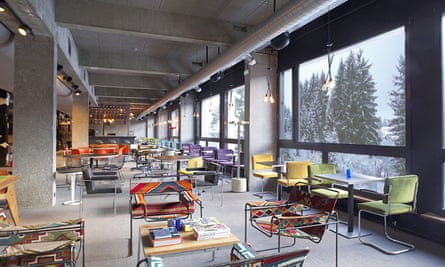
Breuer already had stellar projects including Unesco’s Paris headquarters under his belt (and went on to design New York’s Whitney Museum of American Art), but what he created was shockingly different from anything else in the Alps, then and perhaps since. A whole resort village in stark concrete – almost brutalist structures as far removed from the traditional chocolate-box chalet as could be, in a formerly unspoilt valley.
When Breuer first laid eyes on the location in Haute Savoie, flying above it by helicoptor,he remarked “What a wonderful site! How do we avoid spoiling it?” In the following decades many would complain that he hadn’t. Tastes turned against concrete blocks, and through the 1980s and 90s, Flaine was widely considered a carbuncle on the pristine scenery, associated more with the skiing mass market than art.

But now, thanks to a revived appreciation of brutalist and modernist architecture, Flaine seems attractive again, and one of Breuer’s original hotels, the Totem, which opened in 1971, has been reborn as the super-stylish Hotel Terminal Neige Totem, operated by the Maisons et Hotels Sibuet group.
A real departure from the chain’s staple of Alpine luxury, it has stripped-down, semi-industrial interiors, neon signs and graphic murals in all 96 rooms. The vast open-plan lobby/lounge/bar/restaurant is packed with vintage furniture and arcade games, chairs reupholstered in colourful kilims, Native American-inspired textiles and flashy lighting. Even the ski hire room is cool, like a skate store in an up-and-coming neighbourhood, and staff wear extrovert T-shirts stating “Skiers Are Better Lovers”.

The Totem is the first in the group’s new, more wallet-friendly and youthful Terminal Neige collection, the project of the second generation of Sibuets, the founders’ children, Nicolas, 32, and Marie, 28 – though their mother (and company co-founder) Jocelyne has overseen it. She hopes it will be the Alps’ answer to Mama Shelter – the hip Parisian hangout that raised the bar for the hostel sector.
The bones of the building are still totally Breuer. He designed everything in the original Flaine (it has since expanded to include other developments), from the fireplaces in the hotels and apartments to the font for the signs – and much of it is a protected “historic monument”. Visible from some of the hotel windows is a towering totem pole by Picasso. It’s one of several sculptures donated to the resort by the Boissonnas family: the base is also home to works by Dubuffet and Vasarely, and to Picasso’s plus-size version of his Tête de Femme.
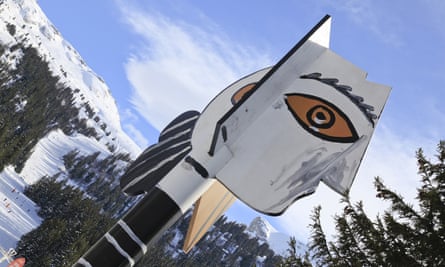
When I visited during opening week in December, the operation was still getting up to speed. The buffet dinner concept wasn’t quite working (with hot dishes such as casseroles ready prepared, but vegetables cooked slowly on demand). The lunch menu was good and inventive though, and breakfast involved pastries aplenty, and excellent coffee from the bar.
I can see this becoming the young social hub its aiming to be. Flaine’s main draw is that you are already halfway up the mountain: the slopes are right outside, and the lifts connect into the wider ski area, incorporating the more traditional villages of Sixt and Morillon. There are family-friendly and intermediate slopes galore, views of Mont Blanc, and powder bowls. Even in snow-starved December, 90% of runs were open.
Next up for the collection are a rehaul of the old Refuge du Montenvers in Chamonix, at the top of the Montenvers railway on the Mer de Glace, for 2017; and the Terminal Neige Gare, opening in a disused cable car station in Avoriaz in 2018 – exciting sounding projects both. Elle Deco should take note.
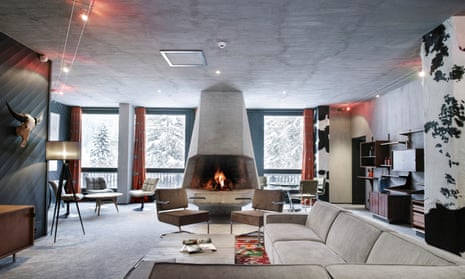


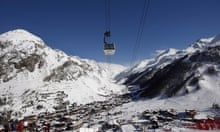


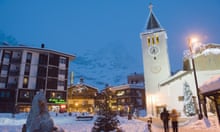



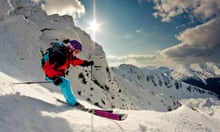
Comments (…)
Sign in or create your Guardian account to join the discussion